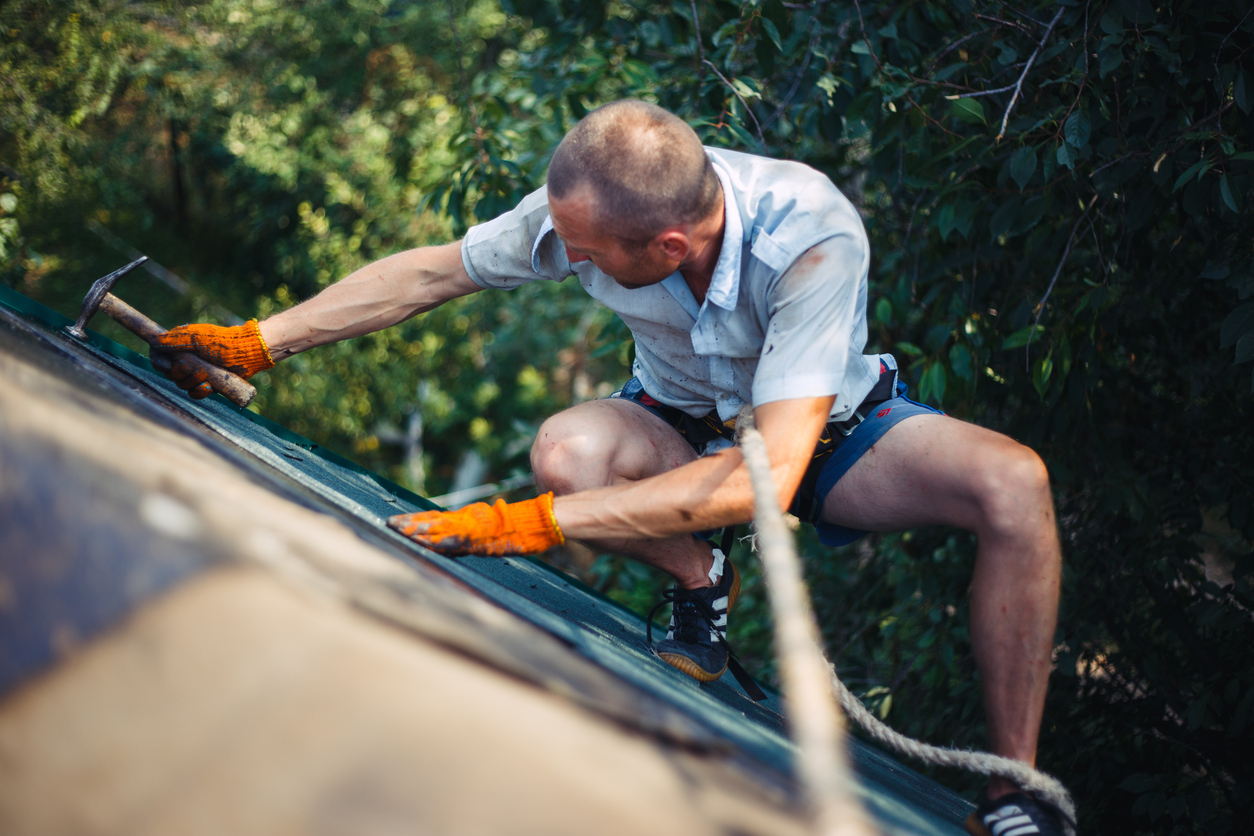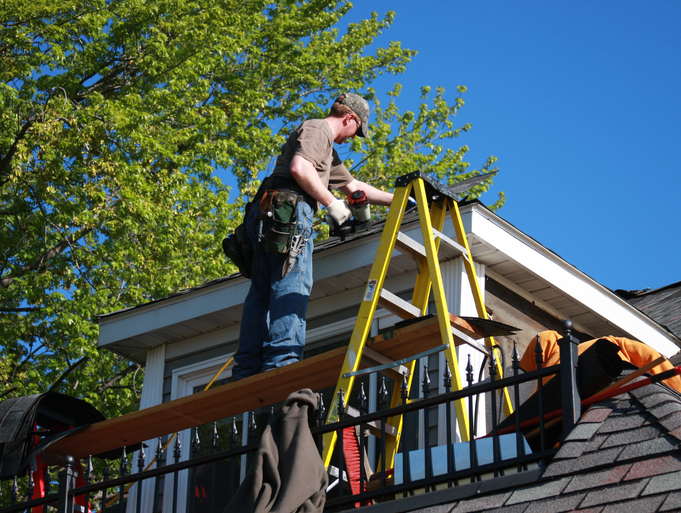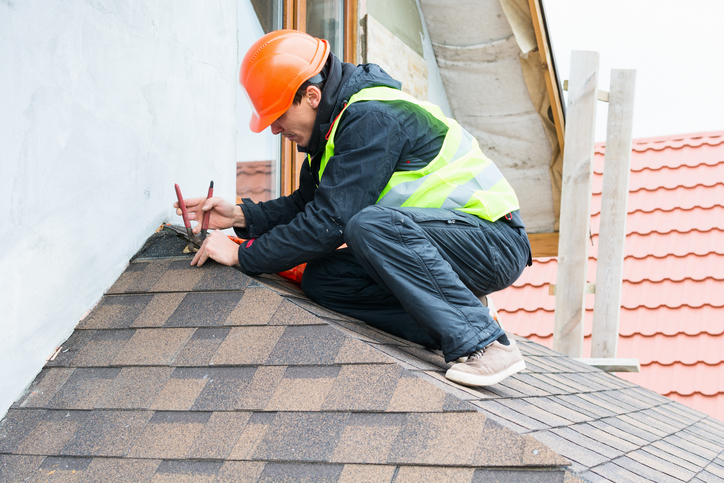
As a homeowner, you will inevitably be faced with the prospect of getting work done on your roof. If you’re a DIYer, you might decide to attempt the job yourself, especially if it’s relatively minor. If you decide to go 100% DIY on your roof maintenance, remember this:
Whatever the size and complexity of the job, the risks you run are always the same.
5 Roofing Safety Tips
We’ve prepared 5 Roofing Safety Tips and strongly recommend you follow them every time you go on your roof.
1. Preparation for work
Never work in extreme temperatures as these can affect the shingles and sealant, or when the roof is wet and slippery. Once you have suitable weather conditions before you even get out your ladder you should do the following:
- Choose a site for your ladder that offers easy access to the roof
- Clear your work area and block it off from pets and children
- Layout your materials and tools in the work area, so they are easy to get to
- Make sure you’re wearing soft-soled shoes as these provide the best traction
- Make a note of the location of potential hazards such as power lines or areas of the roof with a steeper pitch than others
2. Using a ladder for climbing on the roof

In the US, there are more than 500,000 ladder-related injuries every year, and approximately 300 deaths, according to the Consumer product safety commission. The Dept. Of Labor’s Occupational Safety and Health Administration has created a comprehensive set of guidelines for ladder safety which you should follow whenever you are using a ladder for whatever purpose. In addition, here are our safety tips for using a ladder when roofing.
- Never lean your ladder against gutters or siding, especially vinyl. They won’t be able to support your weight, and you’ll do damage to your home and most probably yourself.
- Make sure your ladder extends at least three feet above the point of support and never step on any of the rungs beyond this point.
- Never try to carry more than one item at a time up or down a ladder as they could shift in your grip, changing your center of gravity and causing a fall.
3. On the Roof
Now that you’ve got your work area safe and secure and have set up your ladder correctly, it’s time to go up on the roof. Here’s how to stay safe:
- Always use a safety harness anchored to the roof frame.
- Install safety brackets and walkways to give yourself a safe place to stand and move around on.
- Remember electricity can jump distances of several feet when attracted by metal so don’t put metal brackets or ladders near power lines and avoid wearing tool belts, steel-capped boots, etc. when working in their vicinity.
4. Tools and Equipment

Using tools always comes with its own set of risks and these increase when you’re on the roof, so remember:
- Always follow the manufacturers’ instructions when using power tools.
- Secure power tools with bungee cords or short pieces of rope so they don’t accidentally fall when not in use.
- Keep all your hand-tools in a bucket hung from a roof bracket for the same reason.
- Keep power cords and ropes out of your way, so you don’t trip or slip on them.
5. Be Safe

Following the guidelines above will make DIY repairs to your roof much safer but the only way of guaranteeing you are 100% safe during roofing work is to call in the professionals. It probably won’t be as expensive as you think and, whatever the cost, it’ll still be insignificant compared with the pain and expense of an accident. Just make sure you choose a reputable contractor.
So if you’re having second thoughts about shimmying up the ladder to fix those loose slates, and even if you’re not, give us a call at Ridgecon to book a free estimate and then decide if the savings you’ll make by doing the work yourself are really worth the risk!